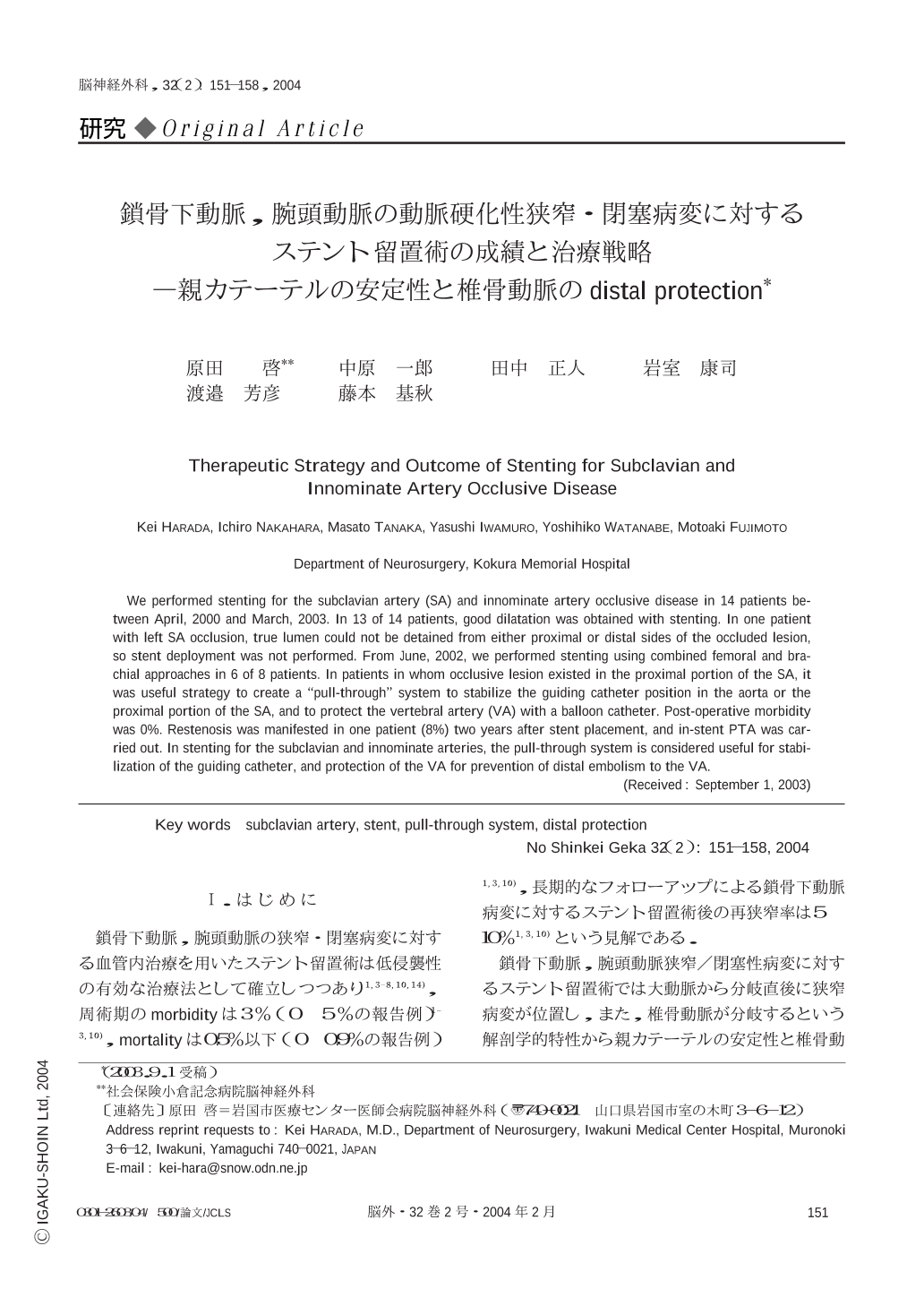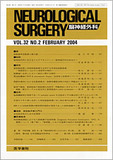Japanese
English
- 有料閲覧
- Abstract 文献概要
- 1ページ目 Look Inside
Ⅰ.はじめに
鎖骨下動脈,腕頭動脈の狭窄・閉塞病変に対する血管内治療を用いたステント留置術は低侵襲性の有効な治療法として確立しつつあり1,3-8,10,14),周術期のmorbidityは3%(0~5%の報告例)1-3,10),mortalityは0.5%以下(0~0.9%の報告例)1,3,10),長期的なフォローアップによる鎖骨下動脈病変に対するステント留置術後の再狭窄率は5~10%1,3,10)という見解である.
鎖骨下動脈,腕頭動脈狭窄/閉塞性病変に対するステント留置術では大動脈から分岐直後に狭窄病変が位置し,また,椎骨動脈が分岐するという解剖学的特性から親カテーテルの安定性と椎骨動脈への塞栓が問題となることがある.鎖骨下動脈にステント留置する場合,特に鎖骨下動脈が大動脈分岐直後で狭窄病変がみられる症例で親カテーテルの安定性が得られずステント留置過程で苦慮する症例がある.また,椎骨動脈へのdistal embolismが起こった場合,重篤な神経症状に至る可能性は高く,術前の血管造影で椎骨動脈の順行性血流がみられずsubclavian steal phenomenon(以下SSP)を示す症例においてもステント留置の過程で病変部の拡張が得られた後,SSPを示していた患側椎骨動脈が順行性に流れ出すことがあり,椎骨動脈へのdistal embolismの可能性がある9,13).
当科で施行した鎖骨下動脈狭窄・閉塞病変14症例の治療成績と,その代表症例を呈示し,親カテーテルの安定性と椎骨動脈のdistal protectionを中心に治療戦略について検討したので報告する.
We performed stenting for the subclavian artery (SA) and innominate artery occlusive disease in 14 patients between April,2000 and March,2003. In 13 of 14 patients,good dilatation was obtained with stenting. In one patient with left SA occlusion,true lumen could not be detained from either proximal or distal sides of the occluded lesion,so stent deployment was not performed. From June,2002,we performed stenting using combined femoral and brachial approaches in 6 of 8 patients. In patients in whom occlusive lesion existed in the proximal portion of the SA,it was useful strategy to create a "pull-through" system to stabilize the guiding catheter position in the aorta or the proximal portion of the SA,and to protect the vertebral artery (VA) with a balloon catheter. Post-operative morbidity was 0%. Restenosis was manifested in one patient (8%) two years after stent placement,and in-stent PTA was carried out. In stenting for the subclavian and innominate arteries,the pull-through system is considered useful for stabilization of the guiding catheter,and protection of the VA for prevention of distal embolism to the VA.

Copyright © 2004, Igaku-Shoin Ltd. All rights reserved.


